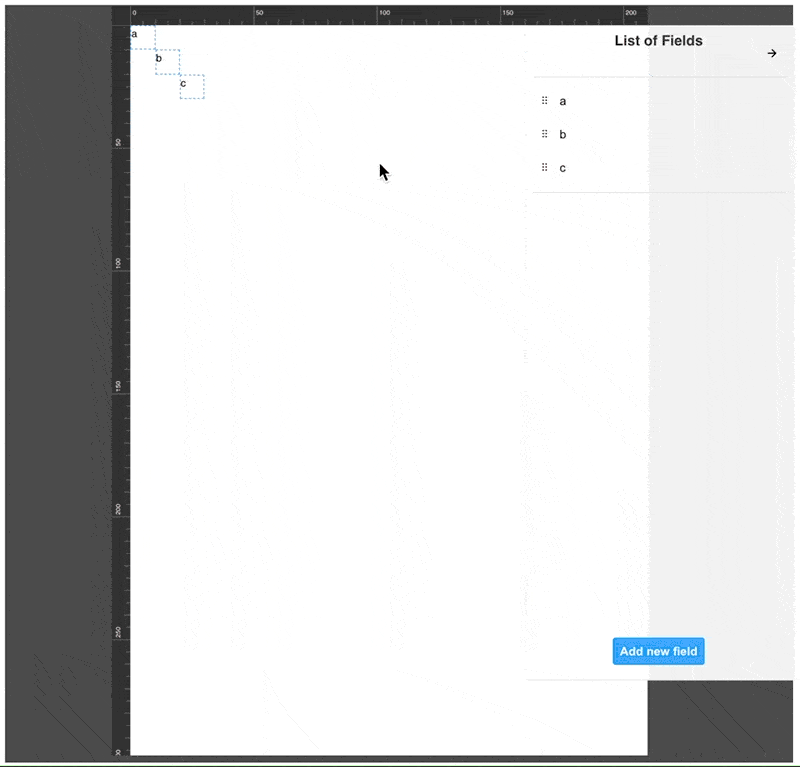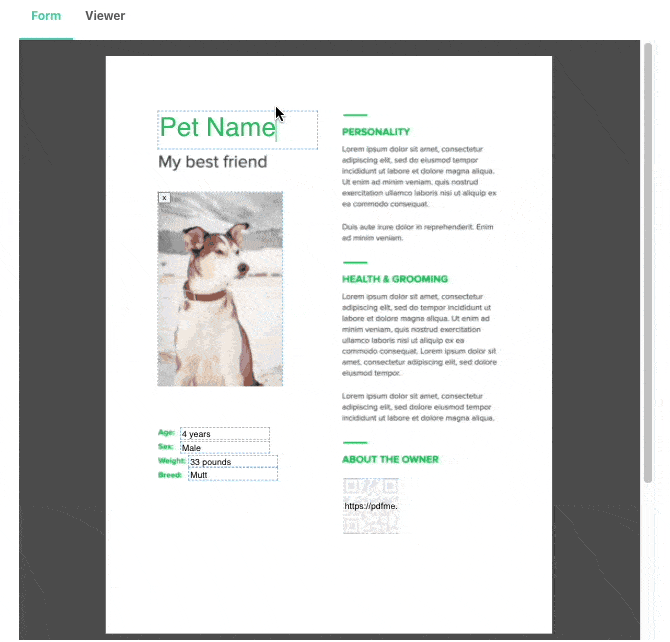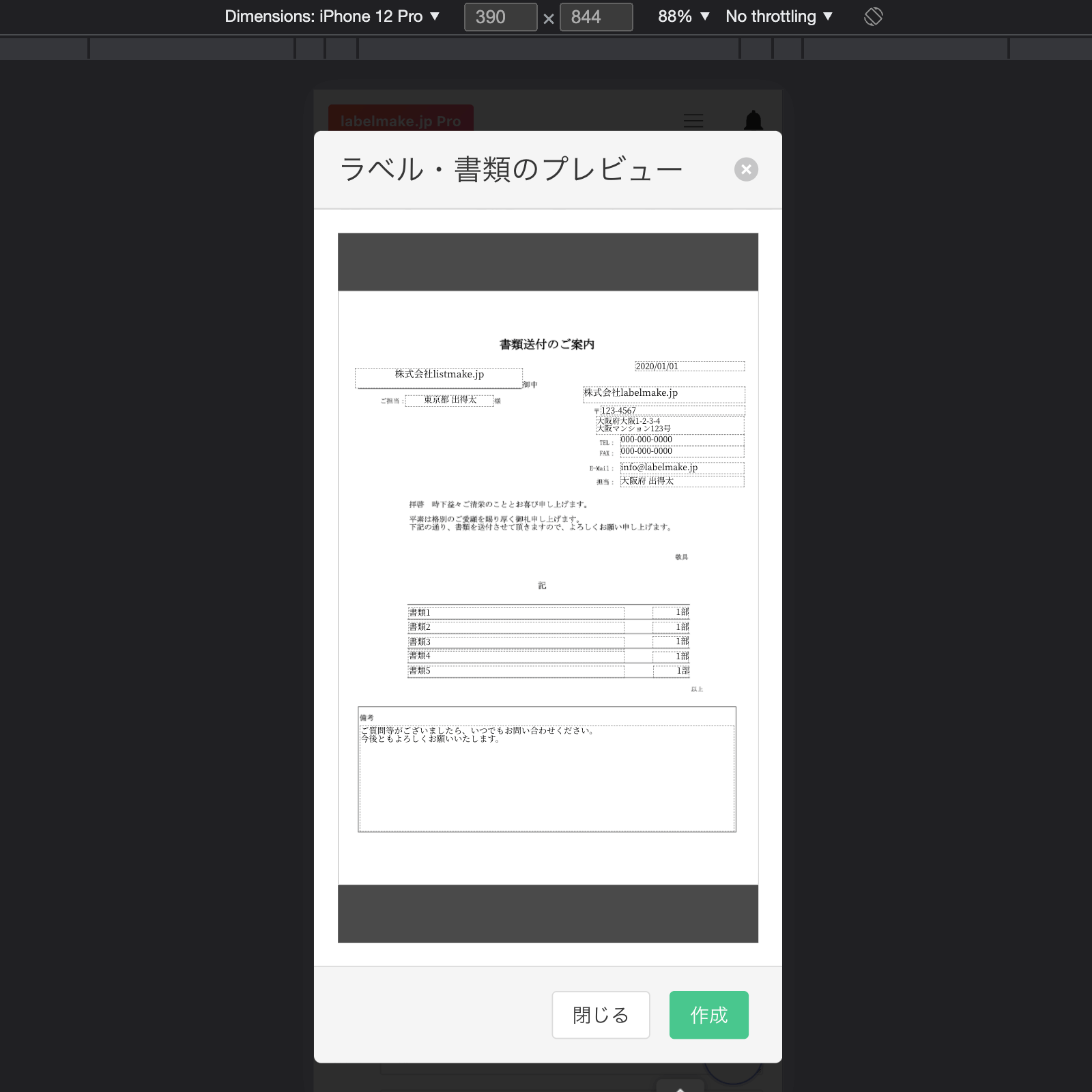
Security News
Fluent Assertions Faces Backlash After Abandoning Open Source Licensing
Fluent Assertions is facing backlash after dropping the Apache license for a commercial model, leaving users blindsided and questioning contributor rights.
@pdfme/generator
Advanced tools
TypeScript base PDF generator and React base UI. Open source, developed by the community, and completely free to use under the MIT license!
TypeScript base PDF generator and React base UI. Open source, developed by the community, and completely free to use under the MIT license!

| Fast PDF Generator | Easy PDF template design | Simple JSON template |
|---|---|---|
| Works on node and browser. Use templates to generate PDF, Complex operations are not needed. | Anyone can easily create templates with the designer. | Templates are JSON data that is easy to understand and handle. |
pdfme was created to simplify the design and generation process of a PDF. It is especially useful for the following use cases:
As an example, the author's service https://labelmake.jp/ can create more than 100 varieties of PDFs and generates more than 100,000 PDF files per month.
The operating requirements should be the node environment >=14. Please see the note at the end of this section for usage on Node.js <16.
There are two packages in pdfme, generator and UI.
The package for generating PDF can be installed with the following command.
npm i @pdfme/generator
The packages for using PDF designer, forms and viewers can be installed with the following commands.
npm i @pdfme/ui
The following type, function and classes are available in pdfme.
@pdfme/generator
@pdfme/ui
If your environment uses webpack, import the necessary items as shown below.
import { Template, generate } from '@pdfme/generator';
import { Template, Designer, Form, Viewer } from '@pdfme/ui';
All objects use Template, which will be briefly explained in the next section.
The core of pdfme library are Templates.
Template Type can be imported by both @pdfme/generator or @pdfme/ui. Templates are used everywhere.
A template can be divided into two parts: a fixed part and a variable part.
We call them basePdf and schema.
The following image is a good illustration of a template.

basePdf can be given a string(base64), ArrayBuffer, or Uint8Array.
A blank A4 PDF can be imported with BLANK_PDF. You can use it to check how it works.
schemas currently has the following types of data available
Let's take a look at some specific data.
(If you are using TypeScript, you can import the Template type.)
import { Template, BLANK_PDF } from '@pdfme/generator';
// import { Template, BLANK_PDF } from '@pdfme/ui'; <- Template types and BLANK_PDF can also be imported from @pdfme/ui.
const template: Template = {
basePdf: BLANK_PDF,
schemas: [
{
a: {
type: 'text',
position: { x: 0, y: 0 },
width: 10,
height: 10,
},
b: {
type: 'text',
position: { x: 10, y: 10 },
width: 10,
height: 10,
},
c: {
type: 'text',
position: { x: 20, y: 20 },
width: 10,
height: 10,
},
},
],
};
For more information, please refer to the API documentation of the Template type here.
You can create a template from Template Design page. Or, if you want to integrate the template creation feature into your application, check out the Designer section.
The PDF generator function, generate, takes 2 arguments of template and inputs for generate a PDF. It works both in Node.js and in the browser.
The code to generate a PDF file using the template created above is shown below.
import { Template, generate } from '@pdfme/generator';
const template: Template = {
// skip... Check the Template section.
};
const inputs = [{ a: 'a1', b: 'b1', c: 'c1' }];
generate({ template, inputs }).then((pdf) => {
console.log(pdf);
// Browser
// const blob = new Blob([pdf.buffer], { type: 'application/pdf' });
// window.open(URL.createObjectURL(blob));
// Node.js
// fs.writeFileSync(path.join(__dirname, `test.pdf`), pdf);
});
You can create a PDF file like the below.

Also, each element in the inputs array corresponds to a page in the PDF, you can create a multi-page PDF file by providing multiple elements of inputs.
For more information, please refer to the API documentation of the generate function here.
The Designer allows you to edit the Template schemas, making it easy for anyone to create Template json objects.
You can design your own template from Template Design page, or you can integrate the designer into your application.
Let's integrate the designer using the template created above as the default template.
import { Template, Designer } from '@pdfme/ui';
const domContainer = document.getElementById('container');
const template: Template = {
// skip... Check the Template section.
};
const designer = new Designer({ domContainer, template });
The Designer class is instantiated as shown above, and the template designer is displayed in the domContainer.
You can edit the template as shown below. The operation is like Google Slides, etc., so you can use common keyboard shortcuts.

The designer instance can be manipulated with the following methods.
saveTemplateupdateTemplategetTemplateonChangeTemplateonSaveTemplatedestroyFor more information, please refer to the API documentation of the Designer class here.
You can use templates to create forms and PDF viewers.
The Form creates a UI for the user to enter schemas based on the template.
import { Template, Form } from '@pdfme/ui';
const domContainer = document.getElementById('container');
const template: Template = {
// skip...
};
// This is initial data.
const inputs = [{ a: 'a1', b: 'b1', c: 'c1' }];
const form = new Form({ domContainer, template, inputs });

The form instance has a method getInputs to get the user's input.
You can generate a PDF file based on the user's input by passing the data you get from getInputs as inputs to generate, as shown in the code below.
generate({ template, inputs: form.getInputs() }).then((pdf) => {
const blob = new Blob([pdf.buffer], { type: 'application/pdf' });
window.open(URL.createObjectURL(blob));
});
For more information, please refer to the API documentation of the Form class here.
Viewing a PDF file in a mobile browser is a pain, because it doesn't display well in an iframe.
The Viewer is a byproduct of the Form development process, but it allows you to show your users a preview of the PDF file you will create.
Using the Viewer is basically the same as using the Form, except that user cannot edit it.
import { Template, Viewer } from '@pdfme/ui';
const domContainer = document.getElementById('container');
const template: Template = {
// skip...
};
const inputs = [{ a: 'a1', b: 'b1', c: 'c1' }];
const viewer = new Viewer({ domContainer, template, inputs });

For more information, please refer to the API documentation of the Viewer class here.
I definitely could not have created pdfme without these libraries. I am grateful to the developers of these libraries.
FAQs
TypeScript base PDF generator and React base UI. Open source, developed by the community, and completely free to use under the MIT license!
The npm package @pdfme/generator receives a total of 15,720 weekly downloads. As such, @pdfme/generator popularity was classified as popular.
We found that @pdfme/generator demonstrated a healthy version release cadence and project activity because the last version was released less than a year ago. It has 0 open source maintainers collaborating on the project.
Did you know?

Socket for GitHub automatically highlights issues in each pull request and monitors the health of all your open source dependencies. Discover the contents of your packages and block harmful activity before you install or update your dependencies.

Security News
Fluent Assertions is facing backlash after dropping the Apache license for a commercial model, leaving users blindsided and questioning contributor rights.

Research
Security News
Socket researchers uncover the risks of a malicious Python package targeting Discord developers.

Security News
The UK is proposing a bold ban on ransomware payments by public entities to disrupt cybercrime, protect critical services, and lead global cybersecurity efforts.